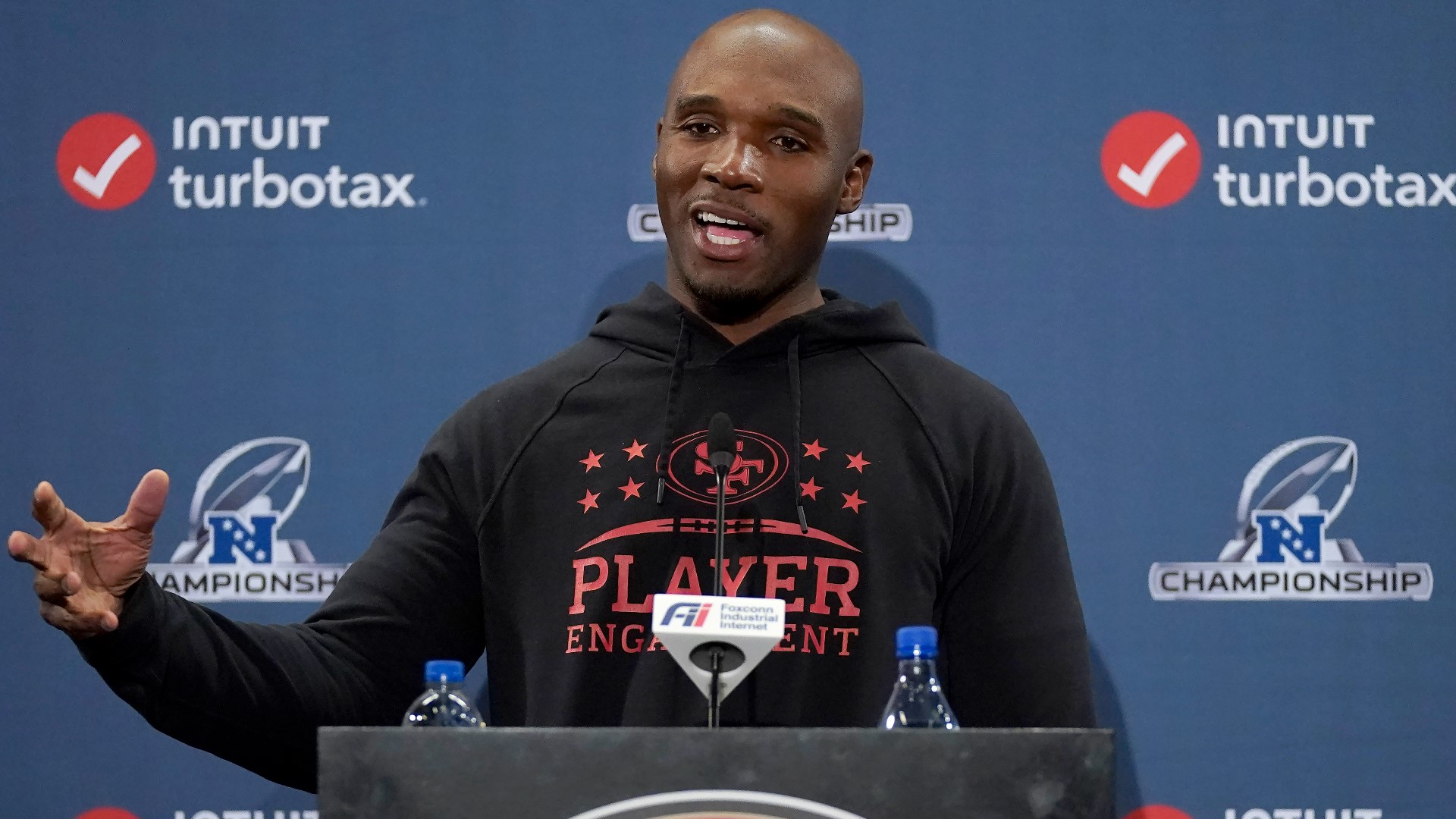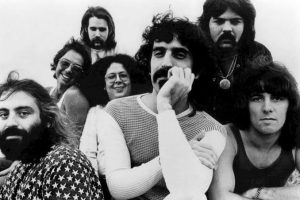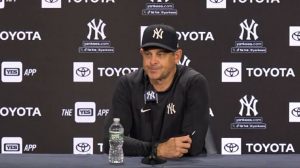
AFC Confirm The 2024 Houston Contract Details
Myles Bryant, CB/PR (Texans): One year, $1.75MM. According to Aaron Wilson of KPRC 2, Bryant’s new deal in Houston includes a guaranteed amount of $800K comprised of $500K of his 2024 base salary (worth a total of $1.2MM) and a $300K signing bonus. Bryant can earn an additional $250K throughout the season with $14,705 per game active roster bonuses.
C.J. Henderson, CB (Texans): One year, $2MM. Wilson reports that Henderson’s contract includes a guaranteed amount of $500K consisting of a $300K signing bonus, like Bryant, and $200K of his 2024 base salary (worth a total of $1.4MM). Henderson will also get a per game active roster bonus, but his will be $17,647 per game for a potential season total of $300K.
L’Jarius Sneed, CB (Titans): Four years, $76.4MM. We already knew quite a bit about this deal when it was reported, though some of the figures weren’t completely accurate. While the reported number for guaranteed money was initially $55MM, it’s actually going to be $51.5MM. Per Mike Florio of NBC Sports, Sneed was guaranteed $44MM at signing consisting of Sneed’s $20MM signing bonus, his 2024 and 2025 base salaries of $4.32MM and 18.32MM, and per game active roster bonuses that equal up to $680K in each of the first two years. The per game active roster bonuses are listed as “fully guaranteed,” but they still must be earned with Sneed’s consistent presence on the active roster. Labeling a roster bonus as fully guaranteed usually means that it is prorated like a signing bonus. In theory, if Sneed misses any games in those two seasons, he’ll be forced to pay back a portion of those prorated bonuses. The remaining $7.5MM of guaranteed money comes from Sneed’s 2026 base salary of $15.15MM. His 2026 salary has $11MM guaranteed for injury at signing, which is likely where the $55MM figure came from, but effectively, the contract’s guarantees stand at $51.5MM. Additionally, Sneed’s per game active roster bonus potential season-totals increase in 2026 and 2027 to $850K apiece.
Shaquil Barrett, OLB (Dolphins): One year, $7MM. We originally reported on Barrett’s one-year deal being worth a maximum of $9MM, which is still true with incentives, but thanks to Cameron Wolfe of NFL Network, now we have the details. Barrett’s new deal in Miami has an actual base value of $7MM. It includes a guaranteed amount of $6.75MM consisting of a $5.54MM signing bonus and the entirety of Barrett’s 2024 base salary (worth $1.21MM). Barrett can also earn an additional $250K through per game active roster bonuses of $14,705 apiece. Due to tight cap space, though, the Dolphins had to add four void years onto the backend of Barrett’s deal. Whether or not he’s on the roster, he’ll carry a cap hit of $4.43MM in 2025 and $1.11MM in each of the following three seasons.
Our Roster Reset series takes a look at where things stand across the league heading into the 2024 NFL Draft. Nick Shook examines the current makeup of the AFC below, addressing each team’s biggest additions, losses and one burning question.
We all know what it took for the Bills to reach the playoffs last season, and Buffalo’s fans should find some optimism in those results. Offensive coordinator Joe Brady returned the team to a more balanced attack, freeing a previously seized-up run game and allowing the Bills to find a much-needed stride down the stretch. Now, though, Josh Allen will enter 2024 without his top target, stat-stuffing receiver Stefon Diggs, who has since been traded to Houston. Buffalo’s top two remaining wideouts are the recently signed Curtis Samuel and Khalil Shakir, who finished with 39 catches for 611 yards and two touchdowns in a secondary role last season. It’s fair to expect the Bills to draft one receiver, if not two receivers, in this year’s receiver-heavy class. That doesn’t guarantee Buffalo will be able to produce at a high level instantly, though, which is reason for concern entering a season in which the Bills should anticipate stiff competition from Miami and New York. Buffalo has capital at its disposal and will need to use it, especially considering the Bills are up against the salary cap. Banking on rookies to contribute immediately, though, is a dangerous game.
We can sleep soundly at night knowing Mike McDaniel’s offense will produce at a high level. The more concerning portion of Miami’s roster remains its defense, which is on its third defensive coordinator in as many seasons and said goodbye to a number of key members this spring. It seems like general manager Chris Grier opted to replace Christian Wilkins, Andrew Van Ginkel, Melvin Ingram and Emmanuel Ogbah with a half-dozen defenders — Shaquil Barrett, defensive tackles Neville Gallimore, Jonathan Harris, Benito Jones and Teair Tart, plus defensive lineman Da’Shawn Hand — in the hope that sheer volume will breed competitive depth along the defensive front. He did the same at the next level of the defense, replacing Jerome Baker with Jordyn Brooks and Anthony Walker, while turning to Jordan Poyer and Kendall Fuller to replace Brandon Jones and Xavien Howard in the secondary. That’s a lot of new faces to integrate into a new scheme under Anthony Weaver, who is certainly capable of making it work. But Miami likely will also be without Jaelan Phillips for much of the year as he recovers from the Achilles injury he sustained in November, leaving one big question mark slapped across the entire unit. That’s not to say this will be a bad group; it’s just a difficult one to project as we stand in April. That can be a quiet advantage, as no one knows what to expect. But it’s certainly far from a guaranteed strength at this point.
This question will be answered in a few weeks, but it’s about more than just how the Patriots spend their highly valuable draft selection — it’s about the future course of the franchise. Bill Belichick is gone, Jerod Mayo is in as his replacement, and Eliot Wolf is effectively the team’s general manager, making for an unpredictable regime as it currently stands. Wolf has history in high places around the NFL, but this is his first job as the final decision-maker, and boy, does he have a decision ahead of him. Will the remaining quarterbacks after Nos. 1 and 2 are (presumably) spent on signal-callers be good enough for Wolf to use a pick on one of them? Or are Jacoby Brissett, Bailey Zappe and Nathan Rourke good enough options for Wolf to look elsewhere (i.e., Ohio State receiver Marvin Harrison Jr.) at No. 3? As we all know, the NFL starts and ends at quarterback, but we don’t know how Mayo, offensive coordinator Alex Van Pelt and Wolf feel about their current depth chart. We do know the Patriots haven’t had a quality option under center since Tom Brady left, and they have an opportunity to change that — if they believe in one of the available passers strongly enough. Otherwise, with so much change having already taken place in Foxborough, it will be interesting to see what type of product Mayo puts out in his first year as a head coach.





